Getting Tested for COVID-19 While Abroad
Traveling during the pandemic? It’s increasingly likely you’ll need a negative COVID-19 test before entering the country you plan to visit – and maybe also before you can return home. Here’s what to know about getting tested abroad.
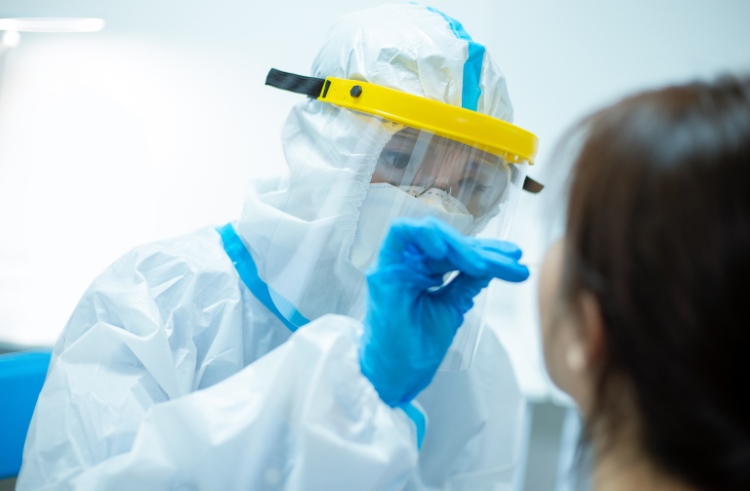 Photo © Getty Images / RyanKing999
Photo © Getty Images / RyanKing999
An increasing number of governments are now requiring negative COVID-19 tests to enter their countries, so, it’s important to research the testing options available.
As well as producing a negative test before entering those countries, you may also have to produce a negative test before returning to your own country of residence. Rules are constantly changing, so make sure you look for the latest country updates before booking flights.
When I visited Ecuador in December 2020, the United States hadn’t yet required travelers to produce a negative COVID-19 test. However, New York City, where I live, did require a test. Though the United States now requires all international air travelers to produce a negative test, it’s possible that some states may implement stricter policies than others (including mandatory quarantines, in some cases). And while some countries may require tests from passengers arriving from any foreign destination, other countries may only require tests when arriving from places with especially high infection rates or variants of the virus. Again, do your research before your trip.
- Required proof of your COVID-19 test
- How do I find a COVID-19 testing site abroad?
- What to expect when getting tested
- Understand the different types of COVID-19 tests
- Checklist for COVID-19 testing abroad
Required proof of your COVID-19 test
In most cases, it’s not enough to simply check a box saying you recently tested negative for the virus. You usually have to prove this, typically by showing the negative results email you received from the testing facility. Each country specifies how recent the test has to be (72 hours, four days, etc.), so the results must show the outcome of the test and when it was administered. To eliminate any potential issues due to a poor Wi-Fi connection, take a screenshot of the results and save it on your phone. If you don’t have a smartphone, bring a printout of the results. (It’s a good idea to carry a printout anyway, in case your phone runs out of battery or gets lost.)
When I checked into my flight to Costa Rica at Newark International Airport in New Jersey in November, airline employees went from passenger to passenger, carefully reviewing their test results. Only after someone confirmed my results was I able to proceed to the security check. Once I arrived in Costa Rica, my test results were reviewed again by immigration officials before I was allowed to proceed to baggage.
In Ecuador, where I’ve seen some of the strongest safety and hygiene measures, arriving airline passengers met with medical staff who reviewed test results, took temperatures, and measured blood oxygen levels through a non-invasive finger sensor device. Only after this process could travelers proceed to customs. When I returned to the Quito airport a few days later to fly to Galápagos, my test results were reviewed by medical personal while I waited to check-in. They were reviewed again by the person who checked me in and reviewed a third time once I arrived in Galápagos.
How do I find a COVID-19 testing site abroad?
Some countries (such as Portugal or Ecuador) offer the option to get tested when you arrive in the country, but you typically have to pay for the test and your accommodation while you quarantine awaiting the results. If you’ve built time into your trip for this, you’re set, but if you expect to get your results within 48 hours and it actually takes 96 hours, your entire trip may be thrown off. As such, it’s best to secure negative test results before you travel.
A quick internet search will likely yield some useful results regarding where to find a test. Embassy or state department pages often include links to sites that offer testing within a specific country, but speaking with your hotel, guide, or tour operator could prove even more helpful. They may have recently coordinated tests for other travelers so they may know if a certain site has a six-hour wait to get tested or which laboratories tend to return results quicker. Some hotels and resorts have even started offering testing facilities for their guests on-site. (But be sure to check whether the test they offer is the type you will need.) If you don’t speak the local language, working with a guide or operator will be especially helpful.
During my trip to Costa Rica, my guide helped me find a nearby testing facility, which required that I make an appointment online the day before. In Ecuador, my hotel in Quito, Casa Gangotena, arranged to have a testing agency come right to the hotel. When the tester was an hour late (she explained how busy the service was visiting other hotels), the hotel reached out to confirm she was on her way.
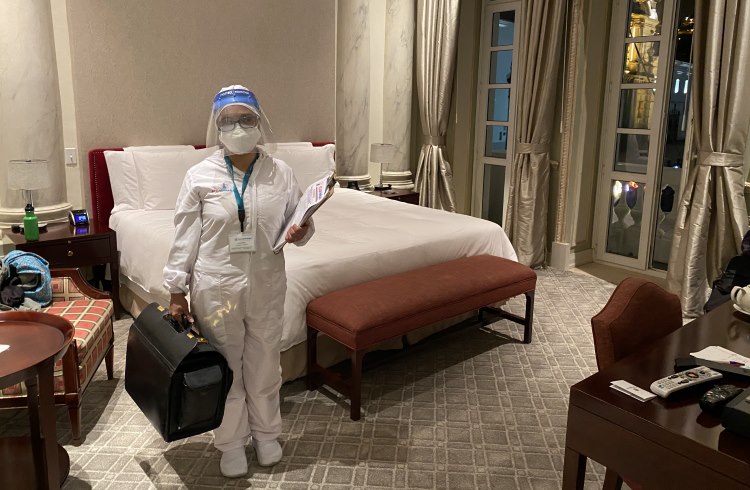
What to expect when getting tested
The actual set-up and structure of my recent tests has varied quite a bit – an indoor clinic in Costa Rica, a hotel room in Ecuador, an outdoor tent in New York City, and a drive-through facility in Wisconsin – but the actual nasal swab experience has been the same across the board (though Latin America tends to push the swab up further than in the US). If possible, make an appointment in advance to minimize wait time, show up with your ID and appointment confirmation number, and record any phone/email address you could reach out to, should you not receive your results within the allotted time.
Aim for the earliest possible appointment in the day, which may result in your receiving the results quicker. For example, according to Mark Whitman of Climb Kilimanjaro Guide, tests taken around Tanzania (and near Kilimanjaro, where many travelers are based), are typically sent to the National Laboratory in Dar es Salaam. Tests taken after 11.30am aren’t sent to the lab until the following day, which can delay results by more than 72 hours.
Understand the different types of COVID-19 tests
There are two main types of COVID-19 tests being used to determine whether someone currently has the virus: rapid antigen tests and molecular tests (PCR tests are a type of molecular test). According to a Cleveland Clinic report, molecular/PCR tests are “more sensitive and specific” than antigen tests. The downside of the PCR test is that it takes about 24 hours to process and could take much longer if the tests are sent to an outside lab and/or if the lab is backed up. Antigen tests can give results in as little as 15 minutes. But, because antigen tests are considered less reliable, some destinations only accept PCR tests. (As of this writing, both antigen and PCR tests are accepted for admission to the US from abroad.)
On my way to Ecuador, I had a layover in Panama, where I found four COVID-19 testing sites at the airport. They were offering antigen test results in 30 minutes for only US $50. According to Metropolitan Touring, which operates tours across Ecuador, some travelers who had planned their own trips to Galápagos arrived at the airport with antigen tests, only be turned away. They hadn’t done their research to know a PCR test was required. Don’t let this happen to you.
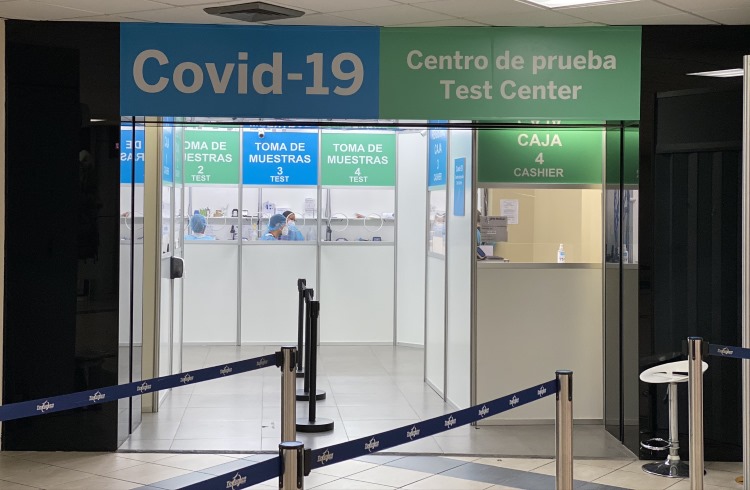
Checklist for COVID-19 testing abroad
- Determine whether the country you’ll visit (and your home country) requires a negative COVID-19 test for entry
- Confirm the type of test required and how recent it must be
- Research how to secure a test in the country(ies) you’ll visit
- Make an appointment with sufficient time to receive the results before boarding your flight
- Bring your ID, money, and your appointment confirmation number to the test
- Get the phone/email of whoever to contact should you not receive the results on time
- Save a screenshot of your negative test results on your phone, and print out a copy if possible
Note: having been vaccinated for COVID-19 doesn’t necessarily mean you are exempt from providing a negative test – check those requirements. Passengers who have already had COVID-19 may be required to show documentation of recovery.
Related articles
Simple and flexible travel insurance
You can buy at home or while traveling, and claim online from anywhere in the world. With 150+ adventure activities covered and 24/7 emergency assistance.
Get a quote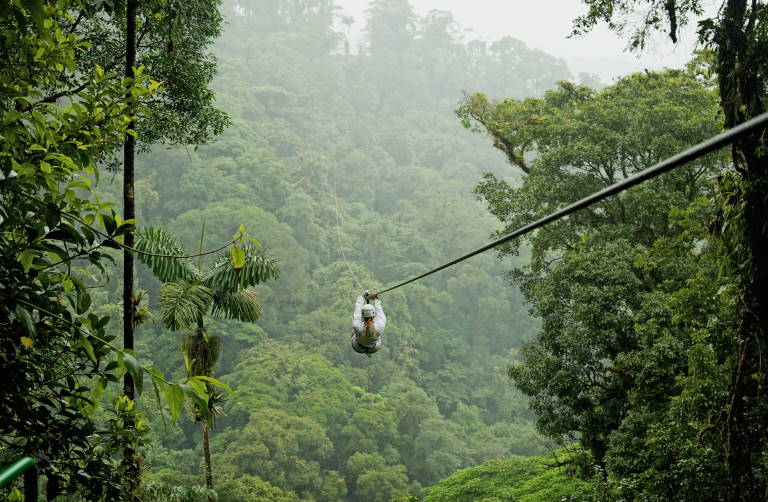
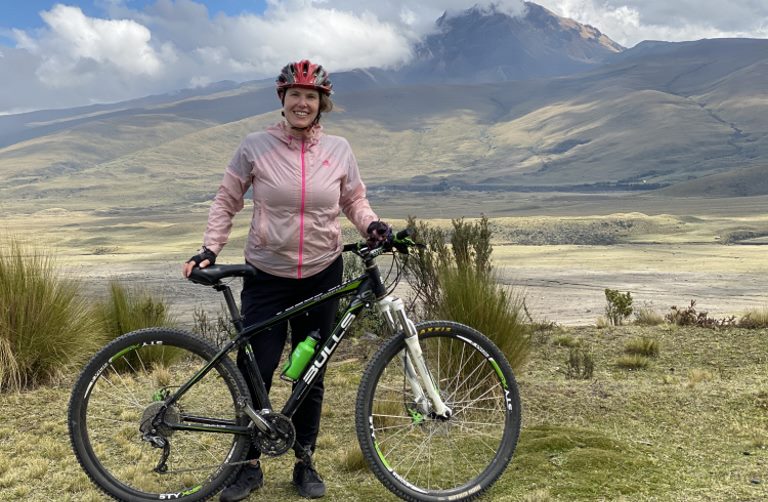
No Comments